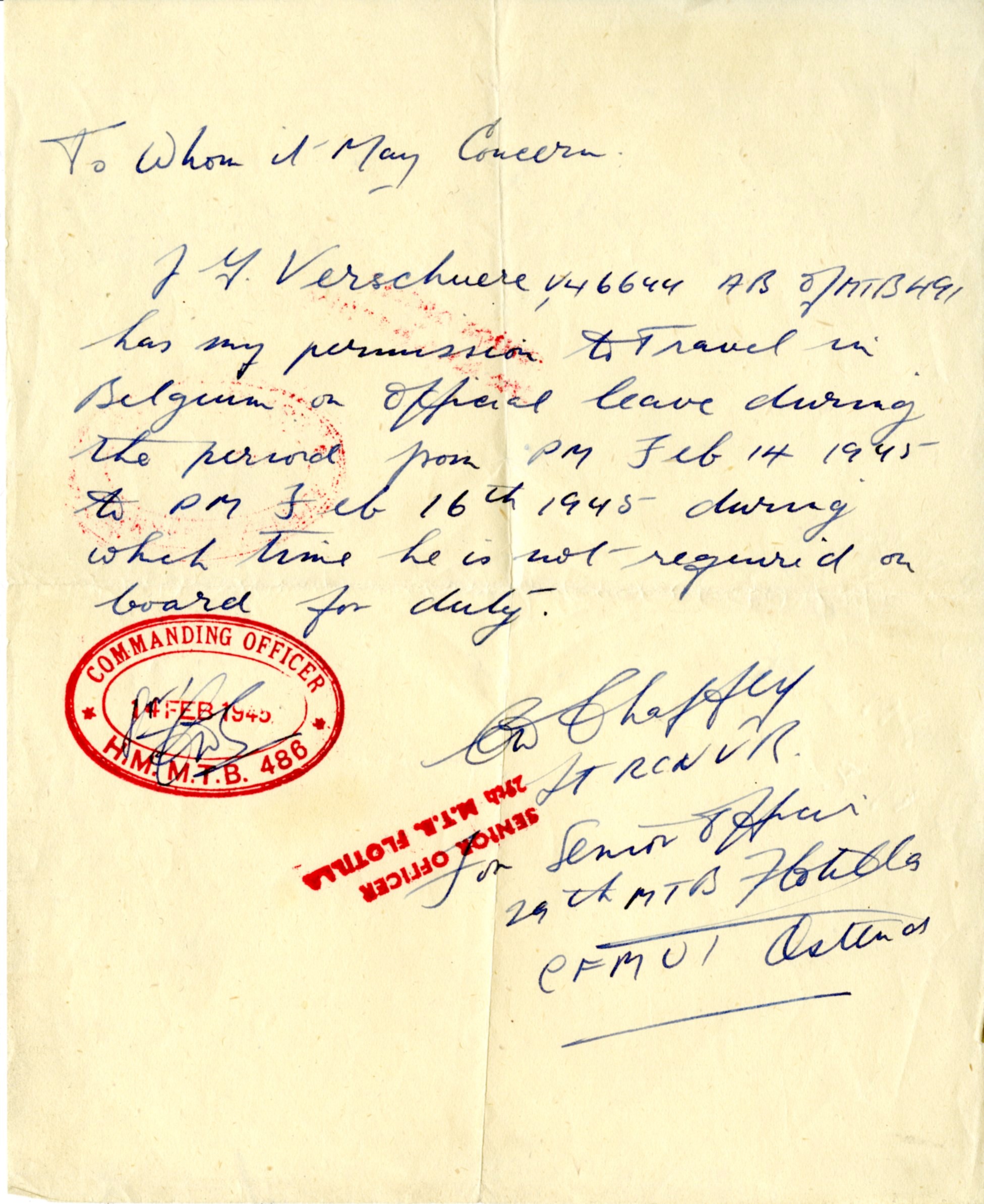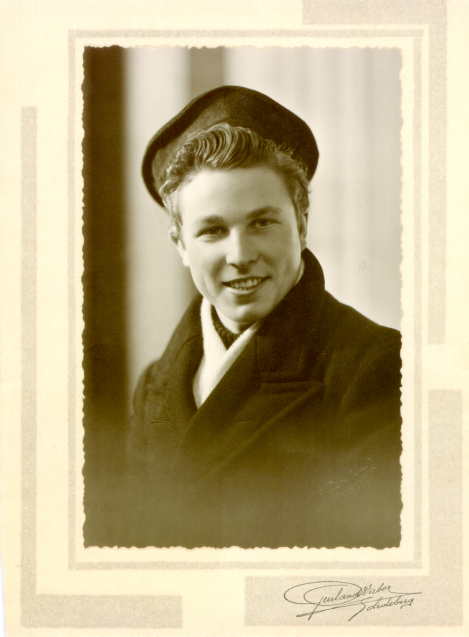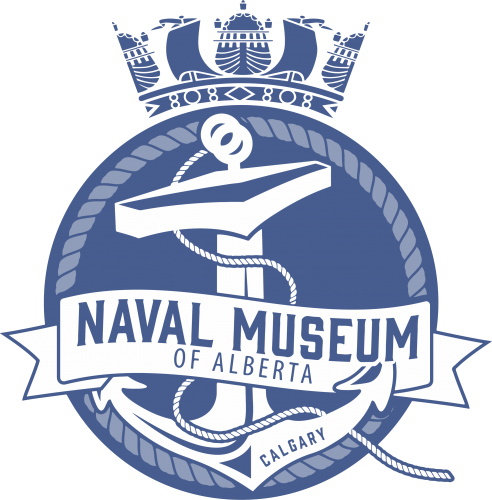PO1 Julian, “Rocky” Verschuere, RCNVR, RCN
September 21st 2022
Julian George “Rocky” VERSCHUERE was born in Ghent, Belgium in 1922 and immigrated to Canada with his family 1928, settling in Drumheller Alberta. During the Second World War, Rocky joined the RCNVR in August 1942 and served overseas as a gunner in the 29th Canadian Motor Torpedo Boat (MTB) Flotilla in the English Channel, serving in MTB 491. F

Julian, “Rocky” Verschuere, RCNVR during the Second World War.
The 29th MTB flotilla had a distinguished history in the English Channel, including action during the landings at Normandy. The flotilla was formed in March 1944 under the command of Lt. Anthony Law (RCNVR), and equipped with eight British built 71’ 6 “ foot (Mk.VI) G-type MTBs. Originally eight MTBs (459, 460, 461, 462, 463, 464, 465, 466) were assigned to the 29th MTB Flotilla with three more boats (485, 486, 491) added later to replace damaged or sunken MTB's.
The 29th MTB flotilla conducted initial work up training at HMS Bee Coastal Forces base at Holyhead throughout April 1944, and moved to its first operational base HMS Fervent Coastal Forces base at Ramsgate in May 1944.
The first mission assigned to the 29th MTB Flotilla was given to MTBs 460,462,464 and 465. Tasked with escorting a clandestine mine gathering expedition to the German controlled Normandy coast, on 16 May 1944 the Canadian MTBs proceeded to the French coast along with two British MTBs, protecting them as volunteers were landed ashore by outboards to lift sample mines from the German beach defence. Managing to accomplish their mission undetected, the captured mines provided much needed intelligence prior to the Allied D-Day landings.
From 20–22 May 1944, the 29th MTB Flotilla joined RCN Tribal-class destroyers and the 65th MTB Flotilla in intercepting enemy coastal convoys in the English Channel. Targeting German schnellboote (E-boats), escort ships, merchant vessels; the MTBs lured German destroyers within the gun range of accompanying heavier warships. Following this success, on 27 May 1944 the 29th MTB Flotilla moved to HMS Hornet Coastal Forces base at Gosport (Portsmouth), in preparation for Operation Neptune in June 1944.
During the Normandy invasion on June 6, 1944, the 29th MBT Flotilla was tasked with guarding the east flank of the invasion fleets, while the 65th MBT Flotilla was assigned to protect the western flank. Following the invasion, the MTBs of the 29th MBT Flotilla patrolled the 15 km distance between the eastern edge of the assault area and the German naval base at Le Havre. Each night three or four Canadian MTBs waited until larger Allied ships tracked the German surface ships attempting either to attack the allied assault area or transport supplies into Le Havre. Typically, short, sharp engagements followed, with the Germans turning back to safety once they realized Allied forces were in place. The 29th MBT Flotilla carried out this duty through August 1944.
AB Verschuere, who was originally from Belgium, had received permission go on official leave to travel to Belgium to visit family from 14 February to 16 February 1945 - when the disaster struck the flotilla. One can only imagine his feeling upon learning what had befallen the flotilla while he was away.

The leave pass given to Julian Verschuere in Ostend February 1945 - when the 29th MTB Flotilla disaster struck.
During the Korean War he was once again called overseas where he spent fourteen months, serving in HMCS Athabaskan.
Upon his return to Canada he returned to the Navy Diving Unit. During his career he witnessed the evolution of diving in the Canadian Navy, including the formation of the Diving & Ordnance Disposal School & Training Centre in 1952. He and his team carried out many diverse tasks including the 1955 recovery of the wreckage of a T-33 fighter near Gimli Manitoba in 1955, and the recovery of the pilot and Harvard aircraft from a crash at Nevell Lake near Brooks Alberta the same year.

Julian Verschuere in dive suit at Brooks Alberta 1955.
PO1 Verschuere also spent time working on the D.E.W. line in the 1960s, where, among other tasks he and his divers set explosive charges under the ice in to clear a channel so that supply ships could re-supply bases.
Navy divers at the time carried out varied specialized roles including the location and destruction of Japanese mines that washed ashore on the B.C. coastline as late as 1960.

A live Japanese mine, washed ashore at Graham Island in the Queen Charlottes – now Haida Gwaii - is prepared for detonation by Julian PO2 Verschuere and Lt. A.E. Booth in 1960.
Julian Verschuere also claimed many diving “firsts” one of which was being part of the RCN mass dive in the newly acquired “wetsuit” in off Alaska’s Taku Glacier in the 1960s, where 10 divers dove to 175 feet in icy waters.
“Rocky” retired from the RCN in 1968. He then joined Federal Parks Canada where he spent the last twenty-five years of his career as a Federal Park Ranger. Rocky spent most of his life on Vancouver Island until 2006 when he moved to Calgary. He passed away in May 2008.
Loyal Edmonton Regimental Museum (online): https://www.lermuseum.org/second-world-war-1939-45/1945/29th-motor-torpedo-boat-flotilla-disaster-14-feb-1945, accessed March 2021
Wartime Heritage Association (online): http://wartimeheritage.com/whaww2ns2/wwii_29_mtbf.htm, accessed March 2021
Royal Navy Coastal Forces (online): https://www.unithistories.com/units_british/RN_MTBs.html, accessed March 2021
Naval Museum of Alberta
Bradley S. Froggatt, Curator

Julian, “Rocky” Verschuere, RCNVR during the Second World War.
The 29th MTB flotilla had a distinguished history in the English Channel, including action during the landings at Normandy. The flotilla was formed in March 1944 under the command of Lt. Anthony Law (RCNVR), and equipped with eight British built 71’ 6 “ foot (Mk.VI) G-type MTBs. Originally eight MTBs (459, 460, 461, 462, 463, 464, 465, 466) were assigned to the 29th MTB Flotilla with three more boats (485, 486, 491) added later to replace damaged or sunken MTB's.
The 29th MTB flotilla conducted initial work up training at HMS Bee Coastal Forces base at Holyhead throughout April 1944, and moved to its first operational base HMS Fervent Coastal Forces base at Ramsgate in May 1944.
The first mission assigned to the 29th MTB Flotilla was given to MTBs 460,462,464 and 465. Tasked with escorting a clandestine mine gathering expedition to the German controlled Normandy coast, on 16 May 1944 the Canadian MTBs proceeded to the French coast along with two British MTBs, protecting them as volunteers were landed ashore by outboards to lift sample mines from the German beach defence. Managing to accomplish their mission undetected, the captured mines provided much needed intelligence prior to the Allied D-Day landings.
From 20–22 May 1944, the 29th MTB Flotilla joined RCN Tribal-class destroyers and the 65th MTB Flotilla in intercepting enemy coastal convoys in the English Channel. Targeting German schnellboote (E-boats), escort ships, merchant vessels; the MTBs lured German destroyers within the gun range of accompanying heavier warships. Following this success, on 27 May 1944 the 29th MTB Flotilla moved to HMS Hornet Coastal Forces base at Gosport (Portsmouth), in preparation for Operation Neptune in June 1944.
During the Normandy invasion on June 6, 1944, the 29th MBT Flotilla was tasked with guarding the east flank of the invasion fleets, while the 65th MBT Flotilla was assigned to protect the western flank. Following the invasion, the MTBs of the 29th MBT Flotilla patrolled the 15 km distance between the eastern edge of the assault area and the German naval base at Le Havre. Each night three or four Canadian MTBs waited until larger Allied ships tracked the German surface ships attempting either to attack the allied assault area or transport supplies into Le Havre. Typically, short, sharp engagements followed, with the Germans turning back to safety once they realized Allied forces were in place. The 29th MBT Flotilla carried out this duty through August 1944.
Disaster Strikes 29 MTB Flotilla
On the afternoon of February 14, 1945, disaster struck the Canadian 29th Motor Torpedo Boat flotilla. In advance of a patrol that night, many of the sailors were asleep on their boats docked in Ostend, Belgium Spilled fuel that had ended up floating on the surface of the harbour suddenly ignited and, before an alarm could even be raised, a raging fire quickly spread amongst the closely-moored vessels. Fuel and ammunition supplies exploded as boat after boat caught fire. Many of the men were trapped on board and had no escape as even the water was aflame. By the time it was over, the 29th flotilla had lost 26 Canadian sailors and five vessels including MTBs 459, 461, 462, 465, 466. An estimated 35 British sailors and seven Royal Navy vessels had also been lost. Two Albertans were lost in the accident including Motor Mechanic Ian W. Hunter and Telegraphist M. Harper.AB Verschuere, who was originally from Belgium, had received permission go on official leave to travel to Belgium to visit family from 14 February to 16 February 1945 - when the disaster struck the flotilla. One can only imagine his feeling upon learning what had befallen the flotilla while he was away.

The leave pass given to Julian Verschuere in Ostend February 1945 - when the 29th MTB Flotilla disaster struck.
Post Second World War
At the end of the war, Rocky returned to Canada where he was discharged in 1945. He then joined the RCN in May 1946 and was stationed at CFB Esquimalt, where helped form the Navy’s first Deep Sea Diving Unit (Fleet Diving Units on both coasts were established shortly after the Second World War as mine countermeasures diving units).During the Korean War he was once again called overseas where he spent fourteen months, serving in HMCS Athabaskan.
Upon his return to Canada he returned to the Navy Diving Unit. During his career he witnessed the evolution of diving in the Canadian Navy, including the formation of the Diving & Ordnance Disposal School & Training Centre in 1952. He and his team carried out many diverse tasks including the 1955 recovery of the wreckage of a T-33 fighter near Gimli Manitoba in 1955, and the recovery of the pilot and Harvard aircraft from a crash at Nevell Lake near Brooks Alberta the same year.

Julian Verschuere in dive suit at Brooks Alberta 1955.
PO1 Verschuere also spent time working on the D.E.W. line in the 1960s, where, among other tasks he and his divers set explosive charges under the ice in to clear a channel so that supply ships could re-supply bases.
Navy divers at the time carried out varied specialized roles including the location and destruction of Japanese mines that washed ashore on the B.C. coastline as late as 1960.

A live Japanese mine, washed ashore at Graham Island in the Queen Charlottes – now Haida Gwaii - is prepared for detonation by Julian PO2 Verschuere and Lt. A.E. Booth in 1960.
Julian Verschuere also claimed many diving “firsts” one of which was being part of the RCN mass dive in the newly acquired “wetsuit” in off Alaska’s Taku Glacier in the 1960s, where 10 divers dove to 175 feet in icy waters.
“Rocky” retired from the RCN in 1968. He then joined Federal Parks Canada where he spent the last twenty-five years of his career as a Federal Park Ranger. Rocky spent most of his life on Vancouver Island until 2006 when he moved to Calgary. He passed away in May 2008.
Acknowledgements
The Naval Museum of Alberta would like to acknowledge and thank Mr. George Verschuere and Marianne Mackenzie who have donated a great amount of photographic and textual material to the NMA related to Julian Verschuere’s RCN career.References
Canadian Naval Divers Association (online): navydiver.ca, accessed March 2021Loyal Edmonton Regimental Museum (online): https://www.lermuseum.org/second-world-war-1939-45/1945/29th-motor-torpedo-boat-flotilla-disaster-14-feb-1945, accessed March 2021
Wartime Heritage Association (online): http://wartimeheritage.com/whaww2ns2/wwii_29_mtbf.htm, accessed March 2021
Royal Navy Coastal Forces (online): https://www.unithistories.com/units_british/RN_MTBs.html, accessed March 2021
Naval Museum of Alberta
Bradley S. Froggatt, Curator

Click to close
